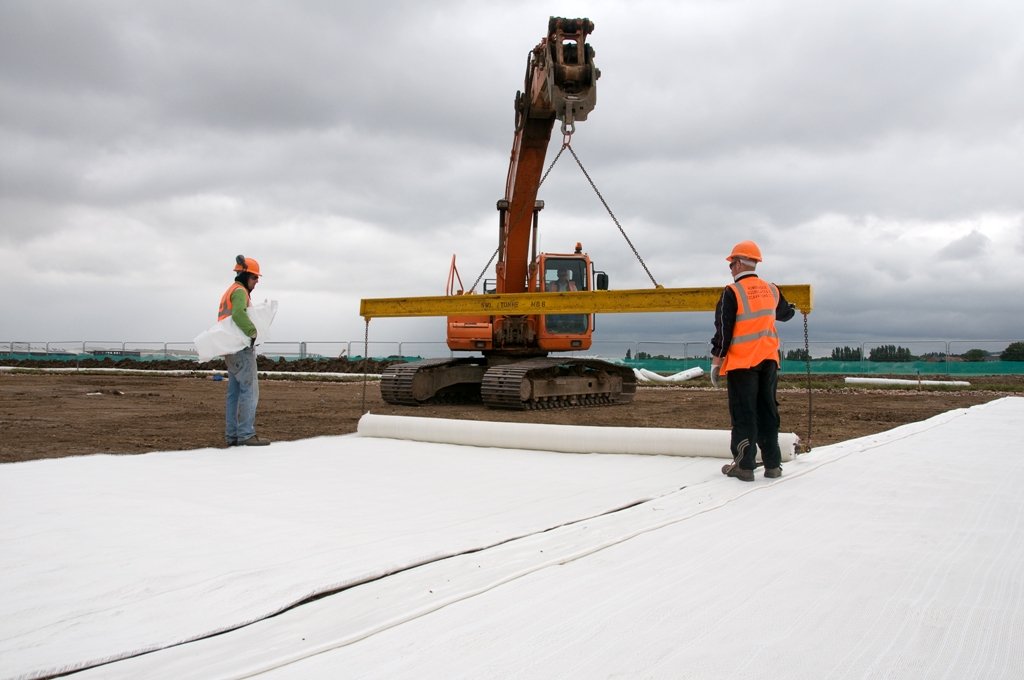An overview of land reclamation
by Andrew Lees, on February 06, 2020
Land reclamation has been used for centuries to create new, usable land from the sea, lakes and rivers, to provide extra space that can be put to economic use, such as land for agriculture, homes, ports, transport and industry.
In this guide we’ll discuss what land reclamation is, the different methods of reclaiming land, the materials used within land reclamation and how stabilising geogrids can help reinforce reclaimed land.
What is land reclamation?
Land reclamation is the process of creating new land by utilising space from oceans, riverbeds or lakes. It is commonly achieved by raising the elevation of the seabed or pumping water out of saturated ground.
What are the methods of land reclamation?
There are many different methods of land reclamation, all depending on the type of land, the fill material being used and other key factors of the land’s circumstances, such as the foundation soil and so on. The five key industry methods of reclaiming land are as follows:
-
Dry method: involves filling the desired area with large foundation rocks and then infilling the rest of the land to the required level. Although the most common method, this land can be liable to a loose fill.
-
Hydraulic reclamation: a wet method that uses fill from a different source, typically used when the required land only needs a small (<10m) fill and can be dumped using bottom opening barges.
-
Hydraulic filling: using fill material from a borrowed source, this land reclamation method involves dredging the material and then pumping via a discharge pipe to the location.
-
Sand spreading: used when the seabed is shallow or soil is soft, this method involves gently spreading sand throughout the area either on a barge or through pipes.
Rehandling: a temporary storage pit with a few million cubic metre capacity is used to temporarily store the fill before use.
Reclaiming land from the sea
Reclaiming land from the sea is the primary form of land reclamation. To create the new land, either material is quarried and used to fill an area, or it is dredged from the sea and dumped from barges or pumped through discharge pipes.
At DP World’s London Gateway, for example, 300Mm3 of river bed material was dredged to provide more than 600ha of new port space. And Hong Kong International Airport was built on a large artificial island built by flattening and levelling two small islands and reclaiming 9.38km2 of seabed.
In Ground Coffee episode 8 Andrew is in Singapore discussing land reclamation
Materials used in land reclamation
Regardless of the land reclamation method, the material used to create new land is often highly variable – from rock, to sands, gravels, silts and clays. All of which have a high settlement risk and require treating before they can provide a stable and safe platform for development. Additionally, the liquefaction potential of these highly saturated soils can be high, an important consideration in seismic areas.
There are a number of ground improvement techniques available to accelerate consolidation settlement, including dynamic and vibro-compaction, vacuum consolidation, drainage, preloading, soil mixing and installing stone columns.
The advantages of building with stabilising geogrids on reclaimed land
As well as short term settlement, the highly variable nature of reclaimed material can lead to long term issues. Constructing earth structures, such as embankments and flood defences, can be an expensive challenge, requiring deep foundations.
Stabilising geogrids offer a cost-effective alternative. Basal mattresses can provide a stable foundation for earth structures on weak reclaimed land, controlling differential settlement and slowing overall settlement and lateral spread. They can also accommodate vertical band drains to accelerate consolidation settlement.
.jpg)
Tensar Basetex being installed on a site in Hull
Additionally, high-strength knitted geotextiles such as Tensar Basetex, can reinforce and enhance the base of embankments, providing additional stability against deep-seated shear surfaces.
Geogrid-stabilised structures can also provide protection against earthquakes. Gravel rafts, mechanically stabilised with Tensar geogrids, for example, have been shown to increase the overall bearing capacity of liquefiable ground.
These solutions are more environmentally-friendly, avoiding the use of concrete and chemical additives; are faster and easier to build, often by hand; and allow rapid place of embankment fill, often without the need for staged construction, saving time and money.
The United Nations predicts that two thirds of the world’s population will live in cities by 2050 (currently it is just over half). As many cities are next to coasts or rivers, reclamation will continue to be one of the primary methods of creating more land to meet increasing demand for space.
Next steps
Tensar can provide specific advice on the use of Tensar geogrids for stable land reclamation. Get in touch today to learn more.
If you have found this post useful, you may want to take a look at our other related posts below:




.png?width=400&height=400&ext=.png)